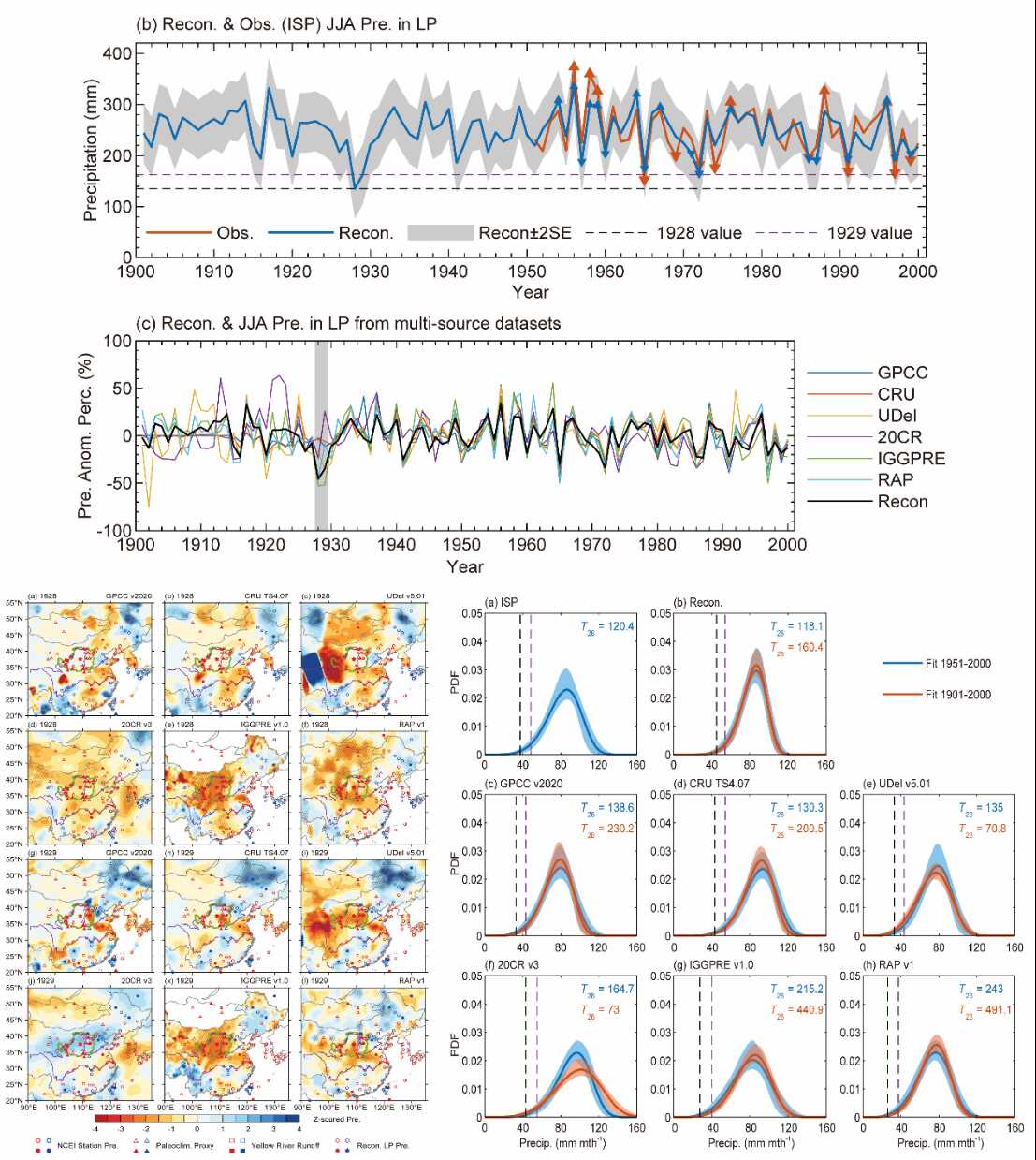Due to the scarcity of reliable meteorological data, it is difficult to analyze historical disaster events, resulting in limited understanding of the evolution patterns and mechanisms of extreme events under climate change. In the late 1920s, a severe drought occurred in northern China, profoundly affecting society at the time. Although the event has been documented historically, its climatic dynamical mechanism had remained unexplained.
To address this issue, Assistant Researcher FANG Congxi from the Institute of Mountain Hazards and Environment, Chinese Academy of Sciences (CAS), collaborated with researchers from the Institute of Earth Environment CAS, Xi'an Jiaotong University, and the Institute of Subtropical Agriculture CAS. By integrating multiple historical climate series, they reconstructed a summer precipitation series from 1901 to 2000 over the Loess Plateau area in northern China. Using this reconstruction as a benchmark, they evaluated multi-source precipitation and reanalysis data sets. Finally, by employing the moisture budget equation and the principle of "present is the key to the past," they explained the climatic dynamics behind the underestimation of this drought event in reanalysis data sets.
The research found that the summer precipitation in 1928 and 1929 decreased by 2.96 and 2.25 standard deviations, respectively, ranking first and second in the past century, with return periods of 160 and 40 years. Multi-source precipitation observation datasets (GPCC, CRU, University of Delaware) and simulation-based reanalysis data (20CR, ERA20C) failed to accurately reflect the extreme precipitation deficits and the corresponding circulation anomalies in this event, mainly due to the absence of observation before 1951 in the study area. However, given the availability of more detailed and reliable meteorological observations in Europe during this period, the researchers inferred that extreme cold anomalies over northern Europe triggered eastward-propagating Rossby waves, causing a strong high-pressure anomaly over Mongolia-Siberia. This inhibited vertical uplift and the associated monsoon moisture inflow over the Loess Plateau. Coupled with the impacts of El Niño and reduced soil moisture from prolonged drought conditions, these factors collectively led to this extreme drought event. The study provides a high-precision historical precipitation series and offers insights into the role of atmospheric teleconnections in disaster chain formation and prediction, as well as the potential for improving reanalysis data through paleoclimate data assimilation.
The research was supported by the National Natural Science Foundation of China and the Strategic Priority Research Program (Category B) of the CAS. The findings were published in Geophysical Research Letters under the title "Reanalysis Data Sets Underestimate the 1928-29 Summer Precipitation Deficits During the Late-1920s Megadrought in Northern China."
URL:https://doi.org/10.1029/2025GL115229

Comparison between reconstructed summer precipitation series and multi-source precipitation data in the Loess Plateau area of northern China, as well as the evaluation of multi-source data sets in reproducing this case (Image by FANG Congxi)

Schematic diagram illustrating the anomalous atmospheric circulation mechanisms causing the extreme drought event in northern China during the late 1920s (Image by FANG Congxi)
Contact:
FANG Congxi
Intitute of Mountain Hazards and Environment, Chinese Academy of Sciences
Chengdu, Sichuan, 610041, China
E-mail Contact: fangcongxi@imde.ac.cn
